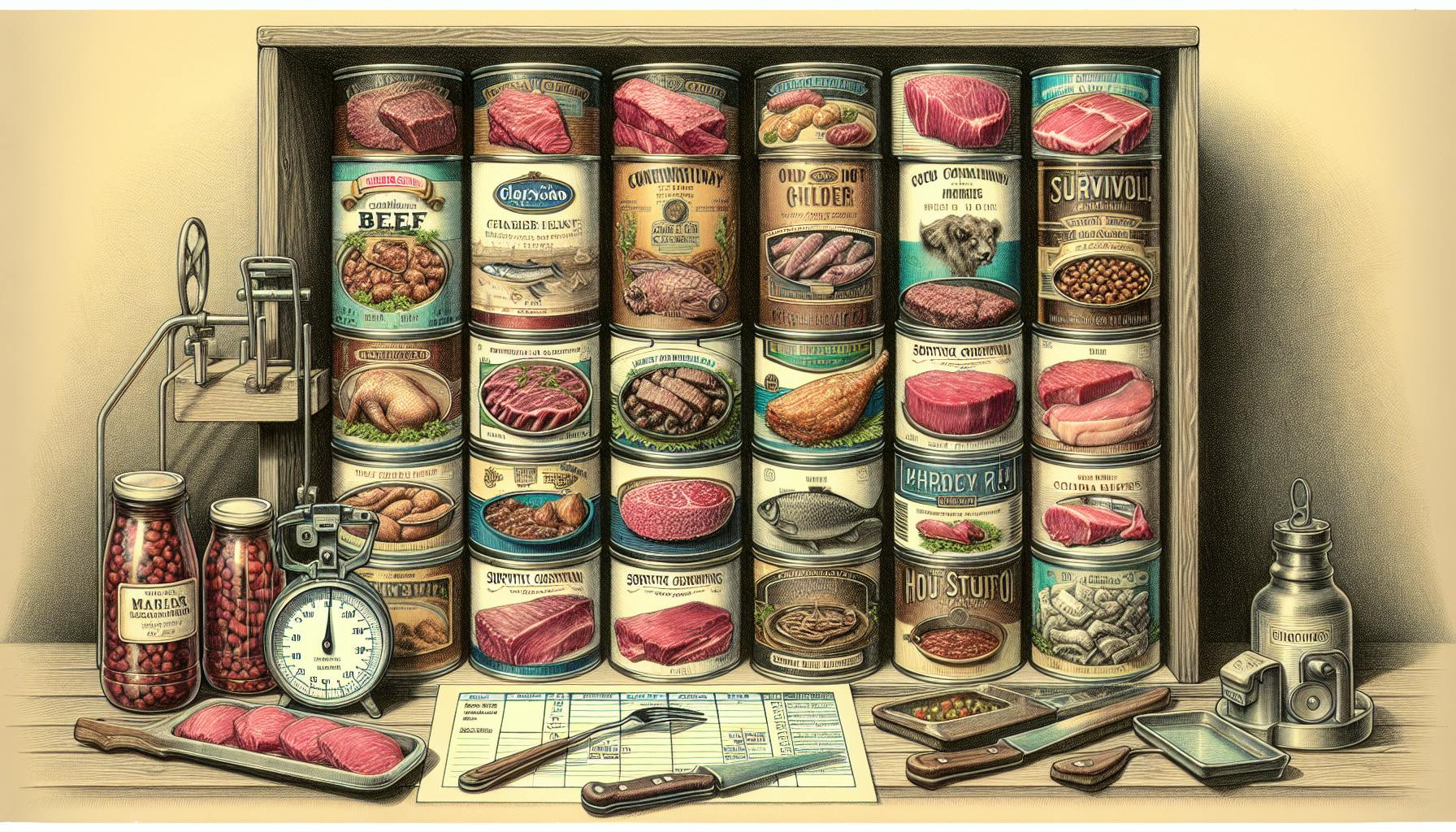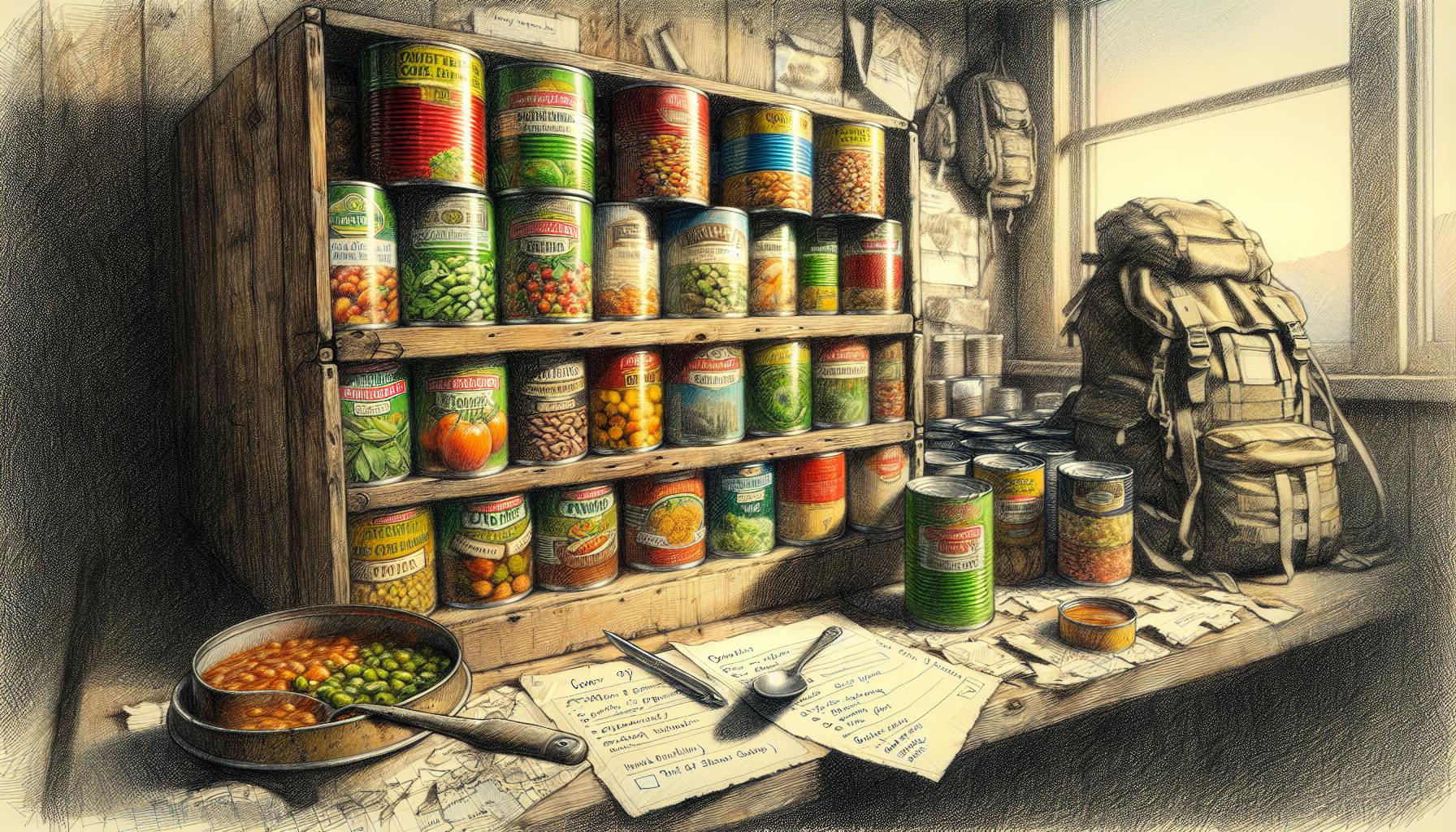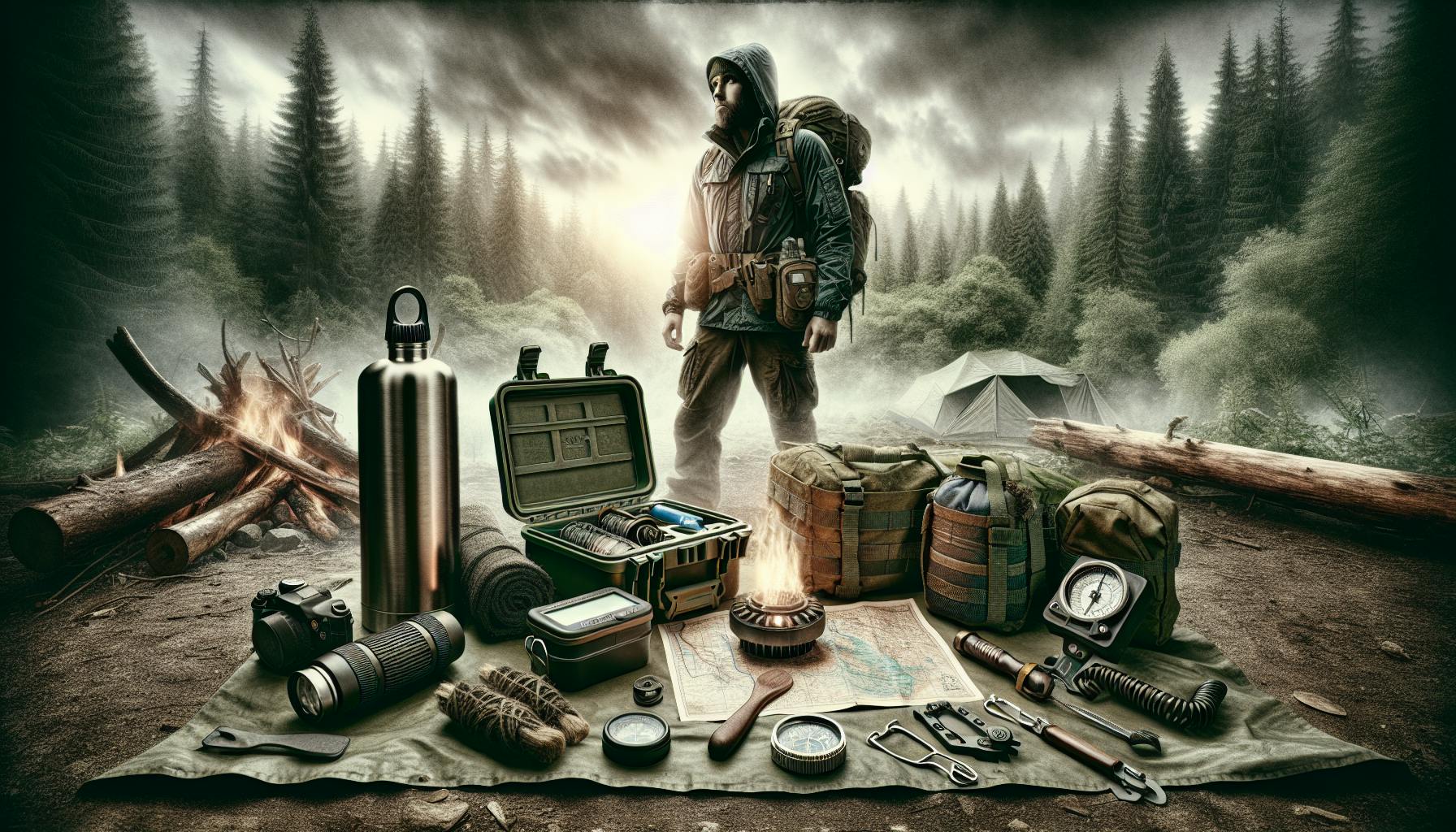When facing extreme conditions, having the right gear can make all the difference for survival.
Equipping yourself with a military-grade survival kit ensures you'll have critical supplies for managing crises and sustaining yourself until rescue.
In this guide, we'll explore core components of tactical kits - from signaling tools to first aid essentials - showing how to optimize emergency preparedness whether in combat or civilian contexts.
Bracing for Survival with the Best Military Survival Kits
Military personnel often find themselves in extreme environments where survival depends on having the right gear. That's why every service member is issued a survival kit packed with essentials like food, water, first aid, shelter, and signaling devices. These kits are designed to sustain an individual for up to 72 hours in emergency scenarios.
Key components of most military survival kits include high-calorie food rations, water purification tablets, weather-appropriate shelter systems, signaling mirrors, fire starters, knives, navigation tools like a compass and map, first aid materials, rope, duct tape, and more. These provisions pack light yet provide the critical capacity to meet basic survival needs if a crisis occurs.
In recent news, a military survival kit proved invaluable when a fighter jet crashed in a heavily wooded area during a training exercise. The pilot used their emergency shelter, rations, and signaling devices to survive for nearly two days before being rescued. Without the survival gear, the outcome could have been tragically different. This real-world example underscores why properly equipped survival kits are standard issue for military members who routinely operate in high-risk environments.
Optimizing Shelter: The Tactical Survival Kit Approach
This section will cover must-have shelter components like lightweight tarps, bivvy sacks, sleeping bags, and tents, explaining ideal features and recommendations for both military and civilian applications.
Military Parachute Survival Kit: Maximizing Lightweight Tarps
Military-grade survival kit tarps need to balance durability, waterproofness, and packability. Surplus parachute canopies make excellent tarps - they are lightweight yet rugged enough for shelter building. The ripstop fabric and reinforced seams ensure water does not penetrate. Multiple lightweight guylines provide flexibility to configure different shelter types like A-frame tents, lean-tos, or weather covers.
Civilians can replicate this survival kit approach using similar ultra-light tarps or compact siliconized nylon rain tarps. Focus on tarps under 2 lbs that stuff into small packs. This enables shelter on demand without weighing down your bag.
Compact Bivvy Sacks for the Field
Military surplus survival kits rely on bivvy sacks for moisture protection and heat retention in open-air bivouacs. Key features include waterproof/breathable membranes like Gore-Tex that prevent interior condensation while blocking wind and precipitation. Durable ripstop shell fabrics, taped seams, and weather-resistant zip seals are also critical.
Look for civilian market alternatives that replicate military-spec construction in ultra-compressible forms. Modern waterproof breathable bivvy sacks weighing under 1 lb are ideal for tactical conditions where rapid shelter deployment is essential.
Choosing the Best Sleeping Bags for Extreme Conditions
Sub-zero rated, mummy-style sleeping bags with hydrophobic down fills excel in military survival kit scenarios. Key metrics like temperature rating, fill power, and compressed pack size determine field suitability. An EN Comfort Rating of -10°F or lower ensures operational viability in extreme cold. High fill power (800+ cuin) down coupled with a ripstop shell maximizes warmth-to-weight ratio. And look for bags compressing to 8 x 14 inches or less - vital for tight packing spaces.
For civilian or hobby use, maintain temperature and fill power specs for true four-season reliability. Focus on improving packed dimensions to enable easier transport compared to mil-spec dimensions.
Rapid-Deployment Tents
Military survival kits integration ultra-light tents with quick setup times (under 3 minutes) and reliable construction. Key features include durable, waterproof ripstop canopy/floors, color-coded clip assemblies, and high-wind stability from aerodynamic shapes and external guyline points. These facilitate rapid deployment even in harsh weather.
Look for civilian equivalents matching ergonomic clip construction and ripstop fabrics. Prioritize livable space and vestibules over minimalist packing sizes to improve general usability. Focus on striking a balance between rapid, reliable setup and practicality for sustained use.
Fire Starters: Ensuring Warmth and Security
Having the ability to start a fire is an essential survival skill, which is why fire starters are a key component of any military survival kit. When you find yourself in an extreme emergency situation, being able to spark a flame can provide critical warmth, enable cooking, purify water, and boost morale. This section will overview must-have fire starting gear to include in your survival pack.
Ferrocerium Rods: Sparking Survival
Ferrocerium rods, also referred to as ferro rods or fire steel, utilize properties of flint and iron to shower sparks when scraped with a striker. This makes ferro rods exceptionally reliable for emergency fire starting. When building your survival kit military, select a ferro rod that is durable yet lightweight, at least 5 inches long, and 3/8 inch thick. Choose a striker with a sharp 90 degree edge for maximum spark production. Spark your ferro rod down towards your tinder at a shallow angle to direct a hot flame right into your material. A quality ferro rod like the Light My Fire Swedish FireSteel 2.0 can ignite over 3,000 fires and is a staple piece of the best military survival kits.
Waterproof Tinders: Quick Ignition Sources
Once you direct sparks from your fire steel onto tinder, you need the right material to immediately catch flame and allow you to grow it into a fire. Tinder refers to fine, fluffy, easily combustible material for starting friction fires. When preparing your military surplus survival kit, ensure you have waterproof tinder options that will light even when damp. Excellent tinders to include are wax-infused cotton balls, petroleum jelly-covered dryer lint, or commercially made tinder tabs like WetFire cubes. Group tinder material into a bird nest configuration and aim your ferro rod sparks directly into the center, where they will smolder the fastest. High-quality waterproof tinders will combust within seconds to get your survival fire going.
Magnesium Fire Starters: An Essential Backup
While ferrocerium rods are extremely reliable, you need redundancy with critical survival gear. That's why a magnesium fire starting tool is mandatory to include in your tactical survival kit. Magnesium shavings scrape off with a knife or serrated striker to direct sparks onto your tinder material. Magnesium lights easily even when wet, burns over 5000°F, and supports your primary ferro rod. An ultimate military survival kit will contain a tool that combines both magnesium and ferrocerium like the Ultimate Survival Technologies Magnesium Emergency Fire Starter. This offers two independent fire starting sources to ensure you stay warm no matter the conditions. With quality fire starters and waterproof tinders, you’ll have flame on demand.
sbb-itb-b932644
Signaling & Navigation: Communicating and Locating in the Field
Having the right signaling and navigation gear is critical for military personnel and civilians alike when facing emergency scenarios outdoors. Key items like signal mirrors, whistles, compasses, maps, and GPS devices enable you to visually or audibly alert rescuers to your location and find your way back to safety if lost or disoriented. The U.S. military survival kit type II class III prioritizes including such equipment.
High-Visibility Signal Mirrors
A quality signal mirror allows you to visually communicate over long distances during daylight. The mirror's reflective surface enables you to aim a bright glint of sunlight toward search planes, helicopters, or ground rescue teams.
When selecting a survival signal mirror, look for ones designed specifically for signaling rescues, not cosmetic mirrors. Opt for a mirror at least 2-inches x 3-inches in size, with sighting guides etched on the surface to properly aim the reflected beam. A lanyard hole allows you to wear the mirror around your neck for quick access.
Top options like Coghlan's and Survive Outdoors Longer (SOL) signal mirrors meet these criteria and come standard in :
- U.S. military survival kit type II
- Military parachute survival kits
- Military surplus survival kits
Practice aiming your rescue signal mirror at a nearby mountainside or building rooftop on sunny days. Doing so will make visually alerting help during actual emergencies more effective.
Emergency Whistles: The Sound of Rescue
A loud emergency whistle serves as an essential backup to signal mirrors should poor weather or nightfall reduce a mirror's visibility. Quality whistles can project your alert call over 1-mile to nearby rescue teams.
Seeking out whistles purpose-built for survival instead of refereeing sports will provide the farthest-reaching sound. Whistles with a pea-less or no-moving-parts designs prevent clogging or freezing up during harsh conditions. Look for versions crafted from durable ABS plastic or marine-grade materials that won't crack over repeated hard blows in frigid temps.
Top emergency whistle models from UST and Fox40 meet these criteria and often ship with :
- The best military survival kits
- U.S. military survival kit type II
- Military surplus survival kits
Practice your alert blowing sequence - three sharp blasts repeated every few minutes - so you instinctively know how to call for help if in a stressful situation.
Reliable Compasses for Tactical Navigation
Should you become lost or disoriented during a wilderness emergency, an accurate compass enables navigation back to safety or civilization by following correct cardinal directions. When every minute counts, you need a compass that won't fail.
Seeking out designs purpose-built for military, SAR teams, or tactical operators, not general hiking, will provide the greatest durability and precision. Key features that improve navigation accuracy include declination adjustment, a transparent rectangular base plate with detailed coordinate scales for map plotting, and a sighting mirror for visibility in direct sunlight.
Top models from Suunto, Cammenga, and Silva meet these criteria. Versions of their compasses ship with:
- The military parachute survival kit
- Military survival kit list essentials
- Best survival kits 2023 selections
Practice navigating by compass, map, and terrain association during local area hikes so the techniques become second nature before emergencies arise. Doing so develops the live-saving navigation abilities all survival, SAR, and tactical operators rely on.
First Aid Preparedness: Managing Trauma and Health in Crisis
This section provides an overview of essential medical items to treat injuries, manage pain, and prevent infection when evacuation is delayed. We'll explore options from military surplus survival kits to ensure comprehensive first aid preparedness.
Comprehensive Wound Care Kits
A well-stocked wound care kit is a critical component of any survival kit military preparation. At minimum, kits should contain gauze pads, adhesive bandages, butterfly bandages for laceration closure, antibiotic ointment, medical tape, trauma shears, tweezers, and sterile gloves.
Military-grade options like the WWII M-1942 first aid pouch provide battle-tested supplies to treat a wide range of wounds, from minor cuts and burns to sprains or fractures. Modernized commercial variants add useful items like blood clotting gauze.
Tailor your kit based on likely injury risks. Those heading into remote wilderness may consider sutures, while urban preppers may emphasize means to stop bleeding from gunshot wounds. Integrating a best military survival kits-level wound care kit dramatically boosts trauma preparedness.
Vital Medications and Pain Relief
In addition to external injury treatment capacity, a comprehensive survival kit military loadout includes vital pain relief and infection prevention medications. At minimum, basic over-the-counter painkillers like acetaminophen and anti-inflammatories like ibuprofen should be included.
For more demanding pain or swelling, opioid derivatives like codeine may be useful, but require proper safeguards against misuse. Local anesthetics are also beneficial for treating severe pain from injuries like gunshots when evacuation will be significantly delayed.
Pack common prescription antibiotics like amoxicillin as part of your military surplus Survival Kit to prevent wound infection. Electrolyte tablets help restore hydration levels. Tailor pharmaceuticals to likely medical needs, local regulations, and proper storage conditions.
Medical Tools for Field Treatment
Basic medical tools like tweezers, scalpels, trauma shears, and digital thermometers enable assessment and treatment across various injuries. Consider adding a stethoscope and blood pressure cuff to monitor patient vitals. Miniature field surgical tools allow for minor procedures if properly trained.
A tactical Survival Kit necessitates capacity to treat gunshot wounds, which may require improvised tourniquets, wound packing items, suture kits, clamps, and wound irrigation syringes. Ensure proper training prior to an emergency.
Use rugged, military-grade equipment wherever possible for durability. Durable storage cases protect delicate items. Prioritize must-have capacity to manage bleeding, immobilize fractures, provide pain relief, and prevent infection when structuring your medical preparedness survival kit military best survival kits 2023.
Nutrition and Hydration: Sustaining the Fight
This section overviews procuring or packing nutritious, non-perishable foods along with methods of collecting, purifying, and storing water while awaiting rescue, a vital aspect of the best survival kits 2023.
Energy-Boosting High-Calorie Rations
When selecting compact, durable foods for a military survival kit, it's essential to choose options that provide sufficient nutrients and calories to maintain health and energy levels in a crisis. Top choices include freeze-dried meals, MREs (Meals Ready to Eat), protein bars, nuts, and jerky. These foods are designed for rugged use, have long shelf lives, and pack easily while delivering the sustenance needed during extended operations. Civilians can also benefit from stocking similar non-perishables. When building your own survival kit, aim for 2,000-2,500 calories per day and include a variety of foods to meet nutritional needs. Useful additions are vitamin supplements, rehydration salts, high-calorie gels or pastes, and caffeine pills for an extra boost when needed. Proper nutrition is often overlooked but vastly improves morale and effectiveness in emergencies.
Foraging Skills: Eating from the Land
While packed rations provide vital nourishment, survival experts recommend learning skills for living off the land as a backup. Key areas to study include identifying edible plants, trapping small game, fishing, and collecting insects for food. For example, cattail roots and pine needles make vitamin-rich teas while tree bark contains starch and dandelion greens provide essential nutrients. Such foraging can stretch stored provisions for weeks. Before utilizing wild edibles, however, correctly identify any flora or fauna to avoid poisoning. Field guides and mobile apps assist with confirmation. Further, boil any water collected outdoors and cook wild plants thoroughly to prevent intestinal issues. With basic skills, survivors can subsist healthfully on natural provisions much like our ancestors. Training at wilderness survival schools provides hands-on practice. When outfitting a bug out bag, add reference materials on wild edibles native to your region.
Securing Clean Water: Filters and Purification
In arid environments or when cut off from groundwater, military survival training emphasizes collecting rain and surface water then purifying it for consumption. Useful items include collapsible water bags and bottles, a stainless steel cup for boiling, water purification tabs (like those in the u.s. military survival kit type ii class iii), and portable water filters. Look for plant-based filters that remove bacteria and particles without chemicals. Properly filtered water limits waterborne illness risk while chemical treatments kill microbes with small doses of iodine or chlorine. All outdoor enthusiasts should carry water purification tools in their hiking and emergency kits. Further, utilize rain catchment systems at home using gutters and barrels to secure off-grid water reserves. With practice, survivors can obtain ample clean water from the landscape when taps run dry.
Final Briefing: Essentials for Your Military-Grade Survival Kit
In this concluding section, we'll summarize the most vital components covered across shelter, fire, signaling, medical, and sustenance categories - re-emphasizing adaptable gear that offers multi-purpose utility for both military and civilian use.
When building your own survival kit military preparedness kit, focus on versatile, compact equipment that meets critical needs. Key items include:
- Shelter: Mylar thermal blankets, tube tents, tarps
- Fire: Stormproof matches, magnesium fire starter
- Signaling: Mirror, whistle, flares
- Medical: Tourniquet, sutures, antibiotic ointment
- Sustenance: High-calorie protein bars, purification tablets
Prioritize purpose-built tools over makeshift DIY options - quality gear improves outcomes. Favor reliability over frills.
While civilian life differs from deployment, emergencies happen. Adapting military surplus survival kits for urban settings creates responsible readiness. With preparation, skills training, and the right tactical survival kit, you gain resilience no matter the situation.


